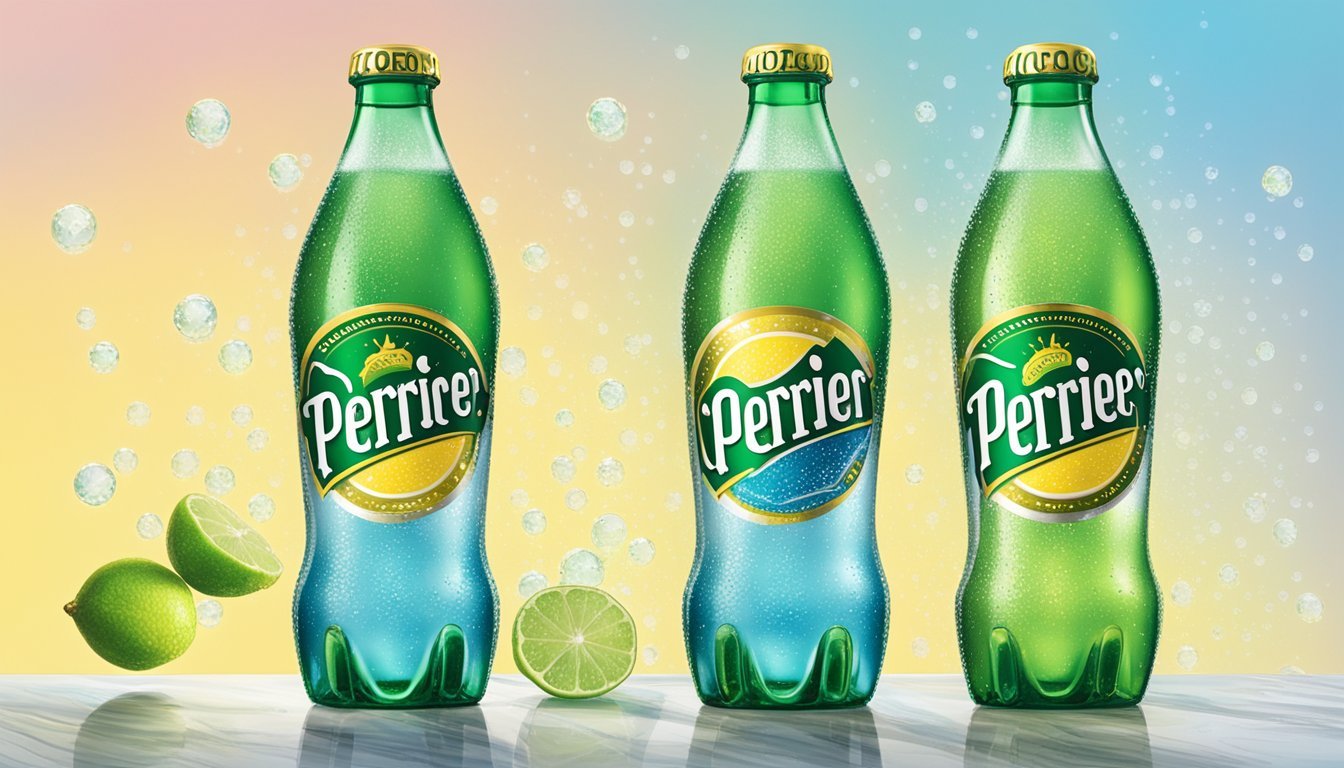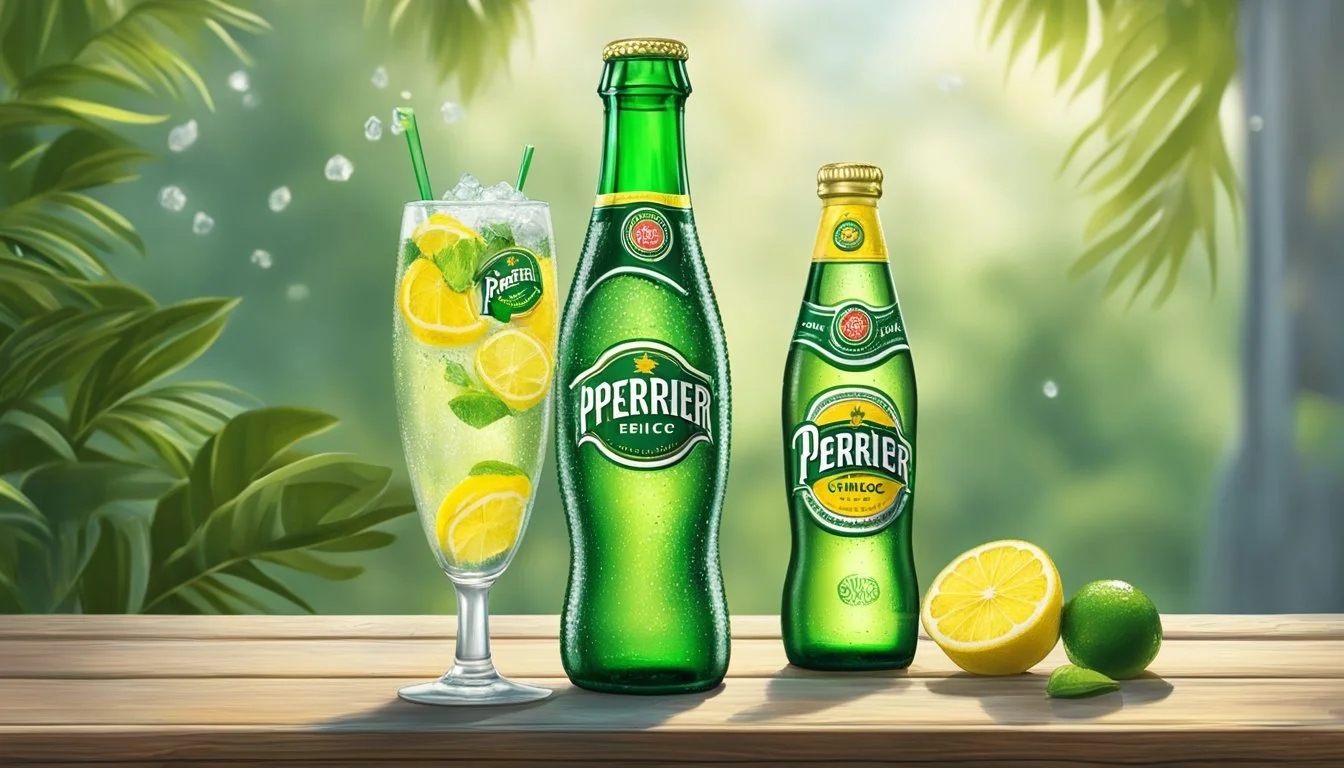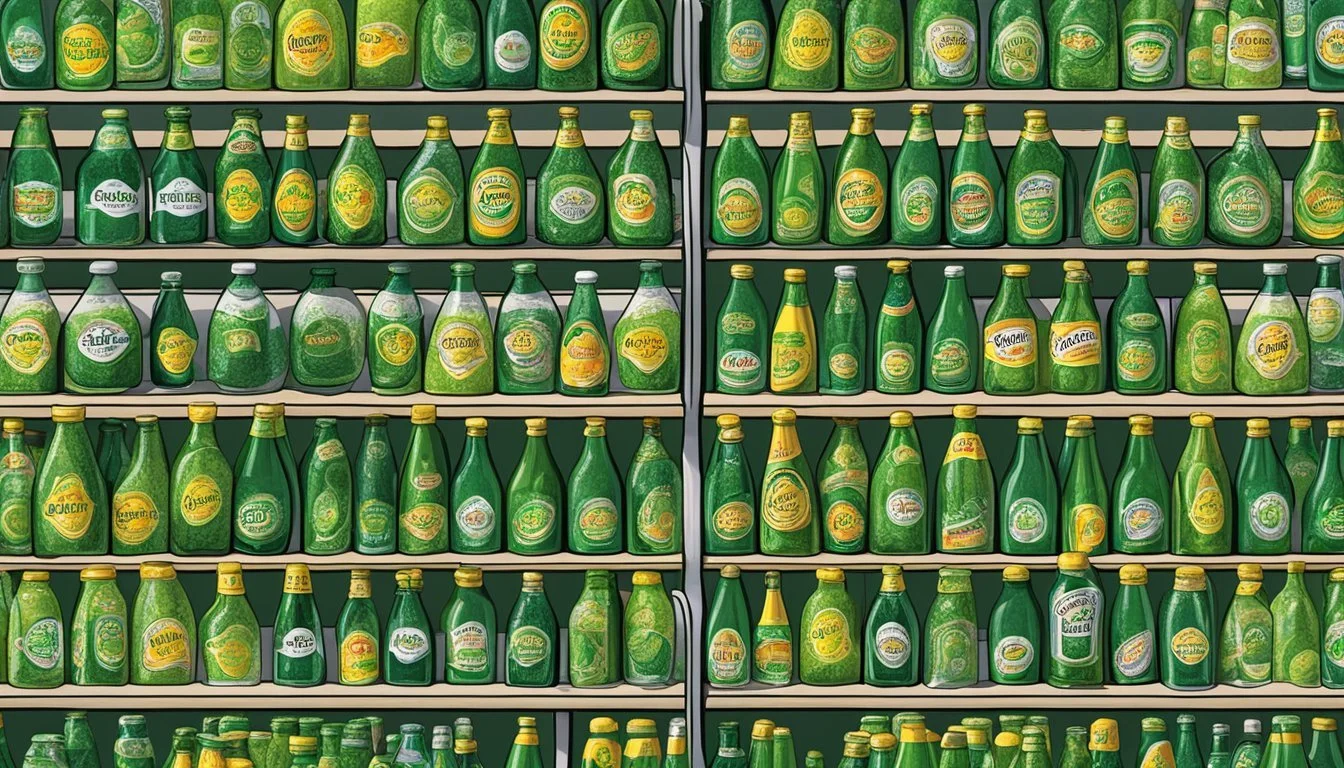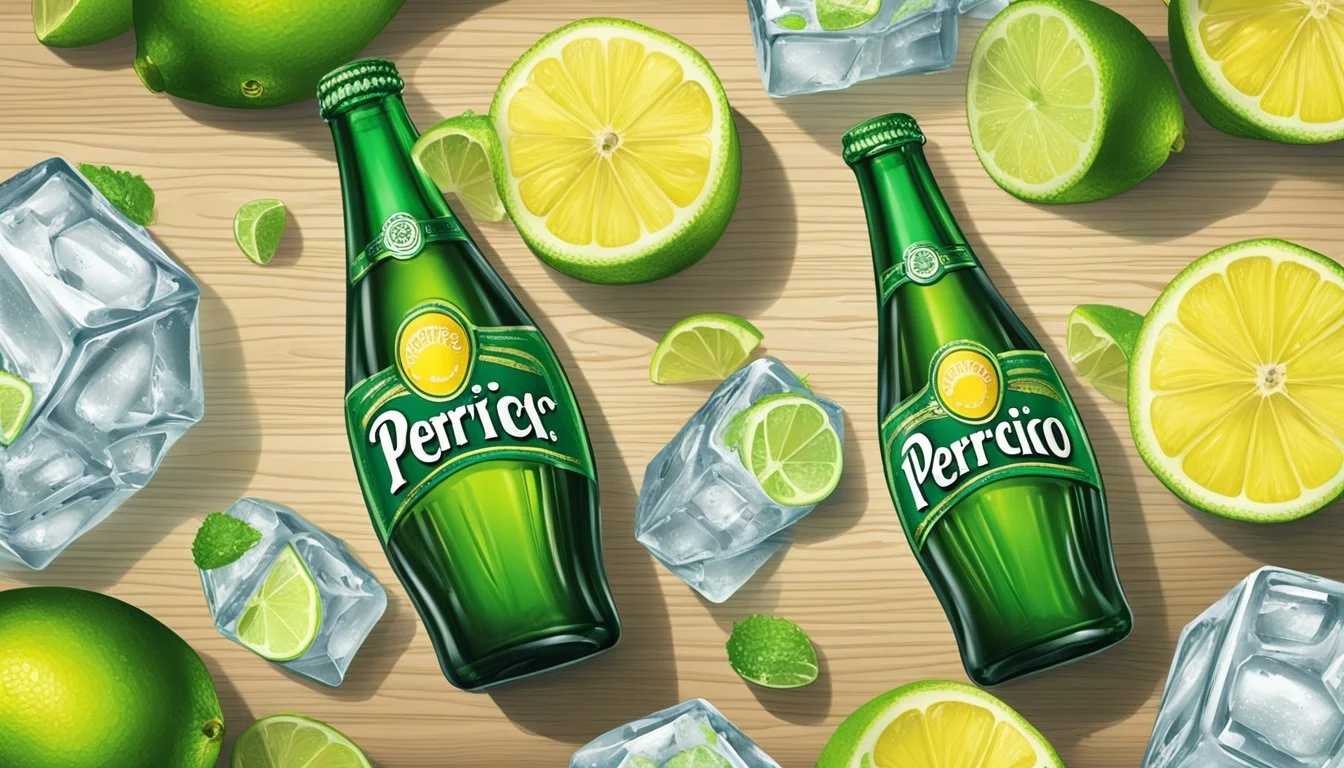Perrier vs. Topo Chico
Comparing Quality and Taste of Bottled Sparkling Waters
In the realm of sparkling waters, two brands have emerged as popular choices within the beverage industry—Perrier and Topo Chico. Each with their own unique taste profiles and histories, these brands offer distinctive experiences for consumers looking for a refreshing and effervescent drink. Perrier, a French brand, is known for its natural carbonation and distinct green bottle, drawing from a spring in Vergèze, located in the Gard département. Topo Chico, on the other hand, hails from Monterrey, Mexico, where it has been sourced and bottled at the Cerro del Topo Chico spring since 1895, boasting a legacy spanning over a century.
The choice between Perrier and Topo Chico often comes down to individual preference, with factors such as mineral content, carbonation level, and taste playing a key role in decision-making. One of the notable differences is the source of carbonation—Perrier is famed for its natural carbonation that is present in the water as it comes from the source, whereas Topo Chico has a natural effervescence that is often enhanced with additional carbonation during bottling to replenish any lost bubbles.
These two brands not only represent a choice of refreshment but also embody a cultural experience and identity shaped by their origins and branding. While Perrier is synonymous with French sophistication and has been a staple in the mineral water market for decades, Topo Chico has gained a dedicated following, lauded for its crispness and potential digestive benefits derived from its mineral composition. Debating which bottled water is better is not merely about the contents but the consumers' connection to the brand's ethos and the sensory satisfaction each sip provides.
Historical Background
The storied pasts of Perrier and Topo Chico reveal a rich heritage rooted in distinct geological locations. These waters, known for their unique mineral content and carbonation, hail respectively from France and Monterrey, Mexico, and have been celebrated for their distinctive tastes and properties.
Origin of Perrier
Perrier traces its origin to a spring in Vergèze, located in the Gard département of France. The spring, known as Les Bouillens, was famously said to be discovered by Hannibal while crossing the Rhône River. Commercial exploitation of this spring water began in the 19th century when Louis-Eugène Perrier, a local doctor, set up a spa resort and later sold water from the spring. The name "Perrier" was branded in 1898, and the water has been an international symbol of French sophistication due to its effervescent spirit and mineral composition.
Origin of Topo Chico
Topo Chico's history extends back to 1895 in Monterrey, Mexico. The water is sourced from the Cerro del Topo Chico, a mountain in the northern Mexican state of Nuevo León. According to legend, the daughter of the Aztec Emperor Moctezuma I illanhuicamina was cured after bathing and drinking from the spring. The therapeutic properties attributed to these waters are part of what has made Topo Chico a prominent name in mineral water across Mexico and beyond, celebrated for its crisp carbonation and beneficial minerals.
Water Source and Composition
In the realm of bottled mineral waters, the source and the unique composition of minerals present are distinguishing factors. Two notable brands, Perrier and Topo Chico, each boast a distinctive origin and minerality profile.
Perrier's Protected Underground Water Source
Perrier is sourced from a protected underground water source in the south of France. The water naturally rises to the surface under the force of carbon dioxide gas. It is captured directly and bottled, which contributes to its well-known carbonation. Perrier's mineral content is characterized by a blend of minerals, including calcium, magnesium, and bicarbonate.
Topo Chico's Mountain Valley Source
Topo Chico sources its mineral water from the Cerro del Topo Chico spring located in Monterrey, Mexico. This area is recognized for its Mountain Valley springs, where the water is said to emerge from volcanic mountains, enriching it with various minerals. Topo Chico has been known for its refreshing taste and quality since it started bottling in 1895.
Mineral Content Comparison
Mineral Perrier (mg/L) Topo Chico (mg/L) Calcium 147.3 12.0 Magnesium 3.4 0.6 Sodium 9.5 34.7 Bicarbonate 390 222 Total Dissolved Solids 475 629
The table above shows a comparison of the mineral content present in both Perrier and Topo Chico water. These minerals are part of what provides their respective tastes and properties. Perrier tends to have a higher level of bicarbonate and calcium, while Topo Chico contains relatively more sodium. The total dissolved solids, which refer to all minerals and salts in the water, differ as well, with Topo Chico having a higher concentration. Each brand's unique mineral composition creates a signature flavor and mouthfeel, contributing to their distinct positions in the market.
Physical Properties
When considering bottled waters like Perrier and Topo Chico, the physical properties such as carbonation levels and taste become distinctive factors, influenced significantly by the bottling process employed.
Carbonation Levels
Perrier is notable for its intense carbonation, which manifests as large bubbles that add a crisp feeling to the water but tend to dissipate quickly. The carbonation in Perrier is naturally occurring from the source. In contrast, Topo Chico displays a higher carbonation level with what some describe as "slicing bubbles," providing a more persistent effervescence. This bubbliness is a defining characteristic of both brands, contributing to their perception as refreshing sparkling mineral waters.
Differences in Taste
The taste of sparkling water varies greatly influenced by the total dissolved solids (TDS) and presence of minerals such as bicarbonate. Perrier offers a more neutral taste with less mineral flavor, which may be attributed to its unique balance of minerals and carbonic acid. Topo Chico, however, has a slight mineral taste that does not overwhelm the palate, making it suitable for pairing with food items such as cheeses, meats, and fish due to its subtle flavor enhancement.
Bottling Process
Both Perrier and Topo Chico are bottled at their respective sources in glass bottles, which helps preserve their mineral content and carbonation. Perrier's bottling process ensures that it maintains its signature taste and carbonated texture from the source to the consumer. Likewise, Topo Chico is bottled to capture its natural effervescence and mineral quality, retaining the essence of the water that contributes to its reputation amongst sparkling water enthusiasts.
Varieties and Flavors
Exploring the range of varieties and flavors from Perrier and Topo Chico reveals a diverse selection of flavored sparkling waters. These offerings cater to a broad palette, featuring everything from classic fruit essences to more unique combinations.
Perrier Flavor Offerings
Perrier’s lineup includes a range of flavors. Its fruit flavored options are underscored by essences like lime, lemon, and grapefruit. Besides these citrus notes, Perrier also ventures into berry territory with a strawberry variety. Here are some of the notable flavors from Perrier:
Lime: A zestful twist, offering a refreshing citrus tang.
Lemon: Classic and crisp, bringing a bright, tangy flavor.
Grapefruit: Slightly bitter yet enticing, for those who enjoy a more complex taste.
Strawberry: Sweet and refreshing with a subtle tartness.
Topo Chico Flavor Offerings
Topo Chico, known for its robust carbonation and mineral content, provides a smaller but distinctive selection of flavored sparkling waters:
Twist of Lime: A sharp and invigorating lime infusion adding a zesty punch.
Twist of Grapefruit: Delivers a tart and tangy grapefruit profile, favored for its refreshing quality.
Twist of Lemon: Offers a classic lemon essence, balancing sourness and refreshment.
While not explicitly stated in the initial search results, the variety of flavors offered by both companies may include additional fruit-inspired options as well as non-fruit flavors, appealing to the varied tastes of consumers in a market where competitors like La Croix and San Pellegrino have their own distinct selections, such as La Croix's Pamplemousse (grapefruit) or San Pellegrino's Aranciata (orange).
Health and Safety Standards
When comparing Perrier and Topo Chico bottled waters, it's crucial to understand how each conforms to health and safety regulations, particularly regarding contamination control and packaging standards.
FDA Regulations Compliance
Perrier and Topo Chico both adhere to the stringent guidelines set by the U.S. Food and Drug Administration (FDA) for bottled water. The FDA ensures that these waters meet federal standards for physical, chemical, microbial, and radiological contaminants. Perrier, for instance, has been characterized by its lack of taste and substantial bubbles, indicating its purity and minimal mineral content. In contrast, Topo Chico has been flagged in the past for containing per- and polyfluoroalkyl substances (PFAS), which are synthetic chemicals linked to health risks, including cancer. However, recent reports suggest that Coca-Cola, the brand's parent company, has significantly lowered the PFAS levels in Topo Chico, demonstrating compliance with safe drinking water standards.
Bottle Safety Information
The safety of the bottles themselves is another consideration under the FDA's purview. Perrier uses glass bottles that are recyclable and do not leach chemicals into the water. Similarly, Topo Chico provides glass bottle options, offering an environmentally friendly choice. Both brands offer plastic bottles as well, which are typically made from PET (polyethylene terephthalate), recognized for not containing BPA or other potentially harmful chemicals when used as intended. It's worth noting that the FDA regulates the safety of these materials and they must meet the agency's food contact substance regulations to ensure consumer health is not compromised.
Usage in Culinary and Lifestyle
The culinary and lifestyle uses of Perrier and Topo Chico extend from their roles in mixology to their presence in wellness trends, with each having a distinct reputation for enhancing beverage experiences and contributing to hydration practices.
Mixology and Beverage Applications
Perrier and Topo Chico serve as integral components in the realm of mixology, primarily as palate refreshers and cocktail ingredients. Perrier, characterized by its tasteless profile and large, quickly dissipating bubbles, is often used in cocktails to add a light effervescence without altering the flavor of the drink. This sparkling water provides a crisp mouthfeel that can cut through the richness of spirits, making it a popular choice among bartenders for drinks requiring a subtle carbonation.
Topo Chico, known for its intense carbonation and faint mineral taste, is commonly preferred for cocktails that benefit from a robust fizz. Its ability to retain carbonation longer than some other sparkling waters, such as seltzer or club soda, makes it a staple in bars. Topo Chico adds a vivacious texture to beverages, which is why some mixologists select it to create lively highballs and other mixed drinks.
Hydration and Wellness Trends
In terms of hydration and wellness trends, both Perrier and Topo Chico align with the rising demand for beverages that support health without compromising on taste. Consumers often seek natural flavors, electrolytes, and added functional ingredients like citric acid, hemp, and adaptogens in their choice of bottled waters.
Perrier offers a range of options with natural flavors, catering to those who enjoy a hint of taste without the addition of sugar or artificial sweeteners. The bubbles in Perrier can aid in quenching thirst and act as a palate cleanser, making it a frequent choice for those wishing to pair a refreshing drink with their meals.
Topo Chico, on the other hand, is often associated with the trend of wellness beverages that contain electrolytes, which are considered essential for rehydration. Its mineral content is a draw for those who believe in the benefits of such natural components for overall health. The unique carbonation of Topo Chico also provides a satisfying alternative to conventional beverages, aligning with the preferences of health-conscious individuals looking for a more exciting hydration option.
Market and Economics
The economic landscape of bottled water, particularly sparkling varieties, is shaped by brand presence and consumer preference. These forces drive the competition and success within the market.
Brand Market Presence
Perrier and Topo Chico are leading players in the global sparkling water market. Regarding sales in U.S. convenience stores, as of December 2021, Perrier held the title for the best-selling brand, indicating strong market penetration and consumer recognition. The sparkling water market also features other notable brands such as La Croix, San Pellegrino, Bubly, and emerging players like Liquid Death and Recess, all vying for market share. Notably, Danone, owning brands like Evian, has a significant stake in the beverage industry.
Perrier: A historic brand with over a century of market presence.
Topo Chico: Known for its distinctive taste and carbonation.
These brands compete in a vibrant market alongside other established names like La Croix, a household staple, and San Pellegrino, an Italian brand esteemed for its fine bubbles and subtle flavors. Polar and Spindrift offer regional appeal, while Bubly represents the shift toward healthier, flavored sparkling water options.
Consumer Preferences
Consumers today gravitate towards sparkling water brands that align with their taste preferences and price sensitivity. Perrier is often seen as a classic choice with notable carbonation, while Topo Chico has found favor for its "slicing bubbles" and robust flavor profile. Price can influence preferences significantly, with some consumers drawn to more affordable options like La Croix or Bubly, while others may opt for premium brands like San Pellegrino, despite the higher cost.
Price Range: From affordable choices like La Croix to premium options like San Pellegrino.
Flavor and Experience: Topo Chico's strong carbonation versus Perrier's subtle effervescence.
The consumer's selection is also impacted by the brand's image and perception—whether it is seen as a luxury good or an everyday beverage. Brands are strategically positioning themselves to cater to these diverse preferences, which in turn influences sales trends and economic outcomes within the sector.
Environmental Impact and Sustainability
When examining the environmental impact and sustainability of bottled water brands Perrier and Topo Chico, it is crucial to consider their production footprint and recycling and waste management practices.
Production Footprint
Perrier sources water from a well in the south of France and is known for its naturally carbonated spring water. The company employs a method where carbon dioxide is added back into the water after extraction and purification processes, which are energy-intensive. The environmental impact here is predominantly associated with the energy used in the production process and the transportation of bottled water worldwide.
Topo Chico, sourced from Monterrey, Mexico, also undertakes bottling and purification processes. Coca-Cola, which owns Topo Chico, has committed to numerous sustainability initiatives. However, the specifics of Topo Chico's production footprint are less publicly detailed compared to global sustainability reports issued by its parent company.
Recycling and Waste Management
In terms of recycling and waste management, both brands utilize recyclable materials for their packaging to some extent. The eco-friendliness of bottled water is often judged by how effectively these materials are managed after use.
Perrier employs glass and PET plastic for its packaging, with glass being recyclable and PET being both recyclable and energy-efficient in production compared to other plastics.
Topo Chico predominantly uses glass bottles, which are also recyclable. Coca-Cola has made commitments to improving recycling rates and reducing packaging waste globally.
Both brands face challenges due to the single-use nature of their products, which contributes to waste if not properly recycled. Consumer behavior and local recycling facilities play pivotal roles in the actual environmental impact post-consumption.
Comparison Summary
When comparing Perrier and Topo Chico, consumers generally weigh considerations like taste, mineral content, and the nature of carbonation.
Pros and Cons of Perrier
Pros:
Perrier is known for its quality sparkling water with a unique taste due to its mineral content.
It often has zero calories and comes in various flavors, catering to a range of preferences.
Cons:
Some may find the carbonation in Perrier to fade too quickly which might affect the experience of drinking it.
The price of Perrier might be higher relative to some other sparkling water brands.
Pros and Cons of Topo Chico
Pros:
Topo Chico boasts a high level of carbonation, which provides a distinctively crisp taste that its drinkers love.
The brand has a loyal following who appreciate its mineral content and its ability to pair well with various foods.
Cons:
Topo Chico might contain sodium, which, while adding to the taste, might not be suitable for those watching their sodium intake.
The price could be a concern for budget-conscious consumers, as its cult-like following suggests it might be priced higher due to demand.
Conclusion
When deciding between Perrier and Topo Chico, consumers are facing a choice between two long-established bottled waters with distinct origins and tastes. Perrier, sourced from France, is a classic sparkling water known for its crisp carbonation and elegant green bottle. Topo Chico, originating from Monterrey, Mexico, offers a high mineral content and a tradition that traces back to 1895.
Health Considerations: For those consulting with a doctor about mineral intake, Topo Chico may provide a higher mineral content. However, both brands offer a healthier alternative to sugary beverages, and the choice may ultimately come down to personal preference and health recommendations.
Environmental Impact: Consumers concerned with environmental factors might lean towards tap or filtered drinking water to reduce the use of plastic and glass bottles, although both Perrier and Topo Chico offer recyclable packaging.
Flavor Profile: Topo Chico is often celebrated for its natural effervescence and slight mineral taste, while Perrier has a well-balanced level of carbonation that makes it a timeless choice for those preferring a milder flavor profile.
Consumer Reports: Although not mentioned in the given search results, reports from consumer advisories can provide additional insights into quality and taste that might influence a purchase decision.
In conclusion, both Perrier and Topo Chico stand as premium choices in the sparkling water market, and the preference for one over the other will depend on individual tastes, health considerations, and environmental priorities.










